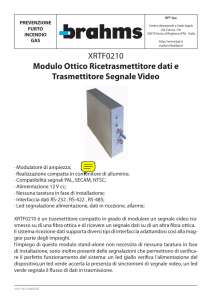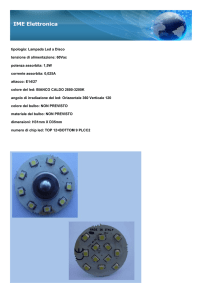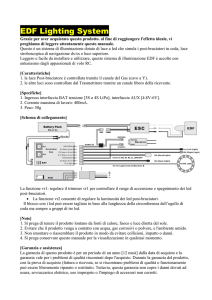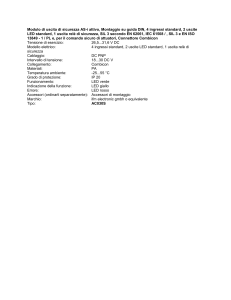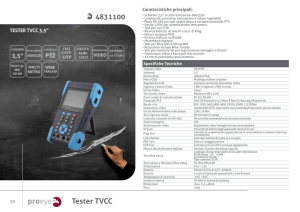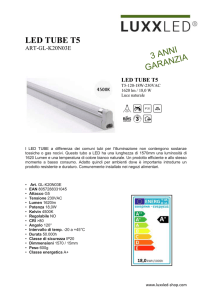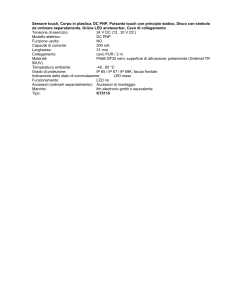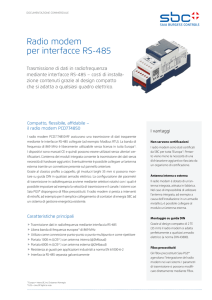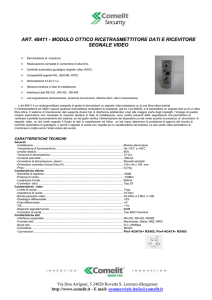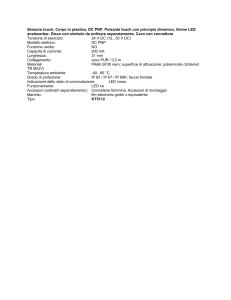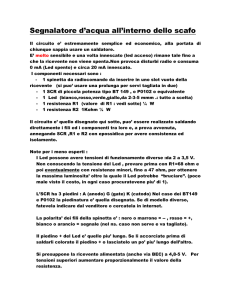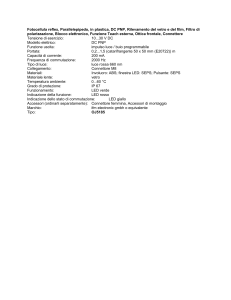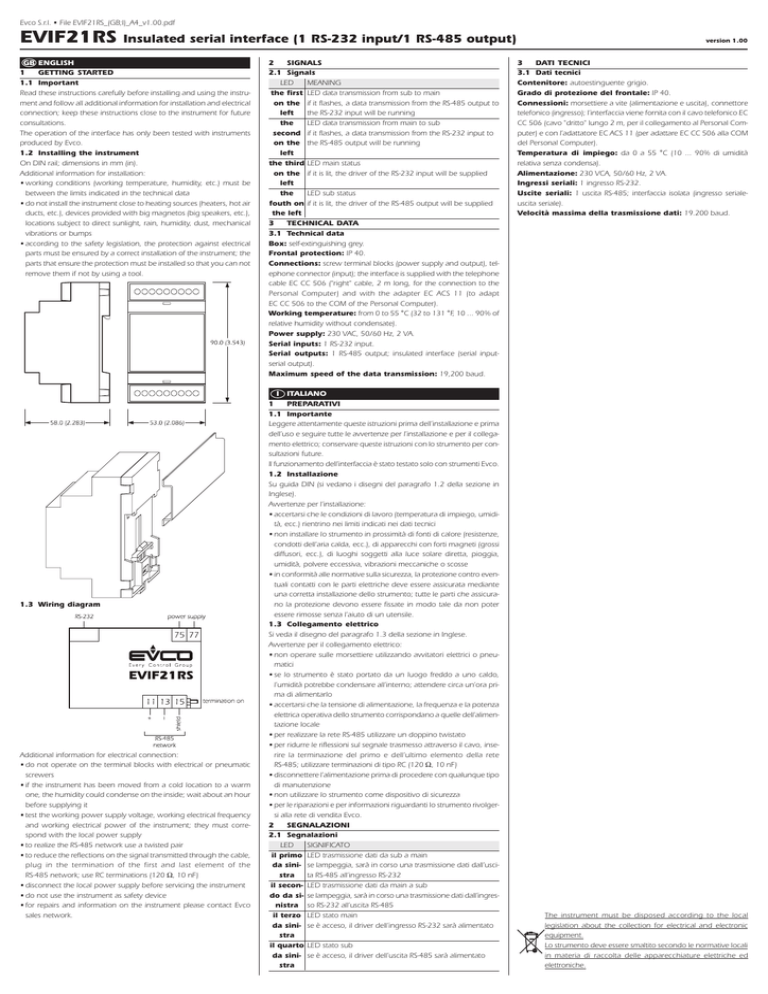
Evco S.r.l. • File EVIF21RS_(GB;I)_A4_v1.00.pdf
EVIF21RS
Insulated serial interface (1 RS-232 input/1 RS-485 output)
GB ENGLISH
1
GETTING STARTED
1.1 Important
Read these instructions carefully before installing and using the instrument and follow all additional information for installation and electrical
connection; keep these instructions close to the instrument for future
consultations.
The operation of the interface has only been tested with instruments
produced by Evco.
1.2 Installing the instrument
On DIN rail; dimensions in mm (in).
Additional information for installation:
• working conditions (working temperature, humidity, etc.) must be
between the limits indicated in the technical data
• do not install the instrument close to heating sources (heaters, hot air
ducts, etc.), devices provided with big magnetos (big speakers, etc.),
locations subject to direct sunlight, rain, humidity, dust, mechanical
vibrations or bumps
• according to the safety legislation, the protection against electrical
parts must be ensured by a correct installation of the instrument; the
parts that ensure the protection must be installed so that you can not
remove them if not by using a tool.
1.3 Wiring diagram
Additional information for electrical connection:
• do not operate on the terminal blocks with electrical or pneumatic
screwers
• if the instrument has been moved from a cold location to a warm
one, the humidity could condense on the inside; wait about an hour
before supplying it
• test the working power supply voltage, working electrical frequency
and working electrical power of the instrument; they must correspond with the local power supply
• to realize the RS-485 network use a twisted pair
• to reduce the reflections on the signal transmitted through the cable,
plug in the termination of the first and last element of the
RS-485 network; use RC terminations (120 Ω, 10 nF)
• disconnect the local power supply before servicing the instrument
• do not use the instrument as safety device
• for repairs and information on the instrument please contact Evco
sales network.
2
SIGNALS
2.1 Signals
LED
MEANING
the first LED data transmission from sub to main
on the if it flashes, a data transmission from the RS-485 output to
left
the RS-232 input will be running
the
LED data transmission from main to sub
second if it flashes, a data transmission from the RS-232 input to
on the the RS-485 output will be running
left
the third LED main status
on the if it is lit, the driver of the RS-232 input will be supplied
left
the
LED sub status
fouth on if it is lit, the driver of the RS-485 output will be supplied
the left
3
TECHNICAL DATA
3.1 Technical data
Box: self-extinguishing grey.
Frontal protection: IP 40.
Connections: screw terminal blocks (power supply and output), telephone connector (input); the interface is supplied with the telephone
cable EC CC 506 ("right" cable, 2 m long, for the connection to the
Personal Computer) and with the adapter EC ACS 11 (to adapt
EC CC 506 to the COM of the Personal Computer).
Working temperature: from 0 to 55 °C (32 to 131 °F, 10 ... 90% of
relative humidity without condensate).
Power supply: 230 VAC, 50/60 Hz, 2 VA.
Serial inputs: 1 RS-232 input.
Serial outputs: 1 RS-485 output; insulated interface (serial inputserial output).
Maximum speed of the data transmission: 19,200 baud.
I ITALIANO
1
PREPARATIVI
1.1 Importante
Leggere attentamente queste istruzioni prima dell’installazione e prima
dell’uso e seguire tutte le avvertenze per l’installazione e per il collegamento elettrico; conservare queste istruzioni con lo strumento per consultazioni future.
Il funzionamento dell’interfaccia è stato testato solo con strumenti Evco.
1.2 Installazione
Su guida DIN (si vedano i disegni del paragrafo 1.2 della sezione in
Inglese).
Avvertenze per l’installazione:
• accertarsi che le condizioni di lavoro (temperatura di impiego, umidità, ecc.) rientrino nei limiti indicati nei dati tecnici
• non installare lo strumento in prossimità di fonti di calore (resistenze,
condotti dell’aria calda, ecc.), di apparecchi con forti magneti (grossi
diffusori, ecc.), di luoghi soggetti alla luce solare diretta, pioggia,
umidità, polvere eccessiva, vibrazioni meccaniche o scosse
• in conformità alle normative sulla sicurezza, la protezione contro eventuali contatti con le parti elettriche deve essere assicurata mediante
una corretta installazione dello strumento; tutte le parti che assicurano la protezione devono essere fissate in modo tale da non poter
essere rimosse senza l’aiuto di un utensile.
1.3 Collegamento elettrico
Si veda il disegno del paragrafo 1.3 della sezione in Inglese.
Avvertenze per il collegamento elettrico:
• non operare sulle morsettiere utilizzando avvitatori elettrici o pneumatici
• se lo strumento è stato portato da un luogo freddo a uno caldo,
l’umidità potrebbe condensare all’interno; attendere circa un’ora prima di alimentarlo
• accertarsi che la tensione di alimentazione, la frequenza e la potenza
elettrica operativa dello strumento corrispondano a quelle dell’alimentazione locale
• per realizzare la rete RS-485 utilizzare un doppino twistato
• per ridurre le riflessioni sul segnale trasmesso attraverso il cavo, inserire la terminazione del primo e dell’ultimo elemento della rete
RS-485; utilizzare terminazioni di tipo RC (120 Ω, 10 nF)
• disconnettere l’alimentazione prima di procedere con qualunque tipo
di manutenzione
• non utilizzare lo strumento come dispositivo di sicurezza
• per le riparazioni e per informazioni riguardanti lo strumento rivolgersi alla rete di vendita Evco.
2
SEGNALAZIONI
2.1 Segnalazioni
LED
SIGNIFICATO
il primo LED trasmissione dati da sub a main
da sini- se lampeggia, sarà in corso una trasmissione dati dall’uscistra
ta RS-485 all’ingresso RS-232
il secon- LED trasmissione dati da main a sub
do da si- se lampeggia, sarà in corso una trasmissione dati dall’ingresnistra so RS-232 all’uscita RS-485
il terzo LED stato main
da sini- se è acceso, il driver dell’ingresso RS-232 sarà alimentato
stra
il quarto LED stato sub
da sini- se è acceso, il driver dell’uscita RS-485 sarà alimentato
stra
version 1.00
3
DATI TECNICI
3.1 Dati tecnici
Contenitore: autoestinguente grigio.
Grado di protezione del frontale: IP 40.
Connessioni: morsettiere a vite (alimentazione e uscita), connettore
telefonico (ingresso); l’interfaccia viene fornita con il cavo telefonico EC
CC 506 (cavo "dritto" lungo 2 m, per il collegamento al Personal Computer) e con l’adattatore EC ACS 11 (per adattare EC CC 506 alla COM
del Personal Computer).
Temperatura di impiego: da 0 a 55 °C (10 ... 90% di umidità
relativa senza condensa).
Alimentazione: 230 VCA, 50/60 Hz, 2 VA.
Ingressi seriali: 1 ingresso RS-232.
Uscite seriali: 1 uscita RS-485; interfaccia isolata (ingresso serialeuscita seriale).
Velocità massima della trasmissione dati: 19.200 baud.
The instrument must be disposed according to the local
legislation about the collection for electrical and electronic
equipment.
Lo strumento deve essere smaltito secondo le normative locali
in materia di raccolta delle apparecchiature elettriche ed
elettroniche.
PT • 44/06
EVCO S.r.l.
This document belongs to Evco; unless you are authorized by Evco, you can not publish this document.
Via Mezzaterra 6, 32036 Sedico Belluno ITALY
Evco does not take any responsibility about features, technical data and possible mistakes related in this document.
Phone +39-0437-852468 • Fax +39-0437-83648
Evco does not take any responsibility about damages coming by the non-observance of additional information.
[email protected] • www.evco.it
Evco reserves the right to make any change without prior notice and at any time without prejudice the basic safety and operating features.

